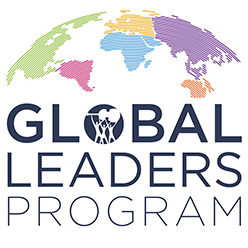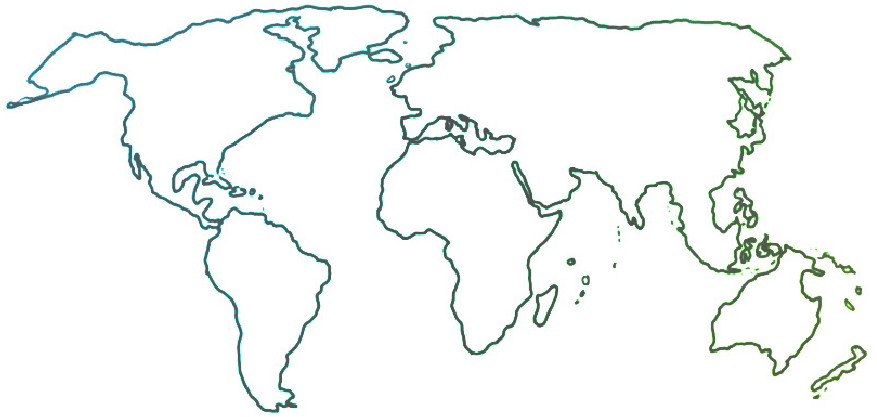
In Aotearoa New Zealand, Kaupapa Leads to Connection
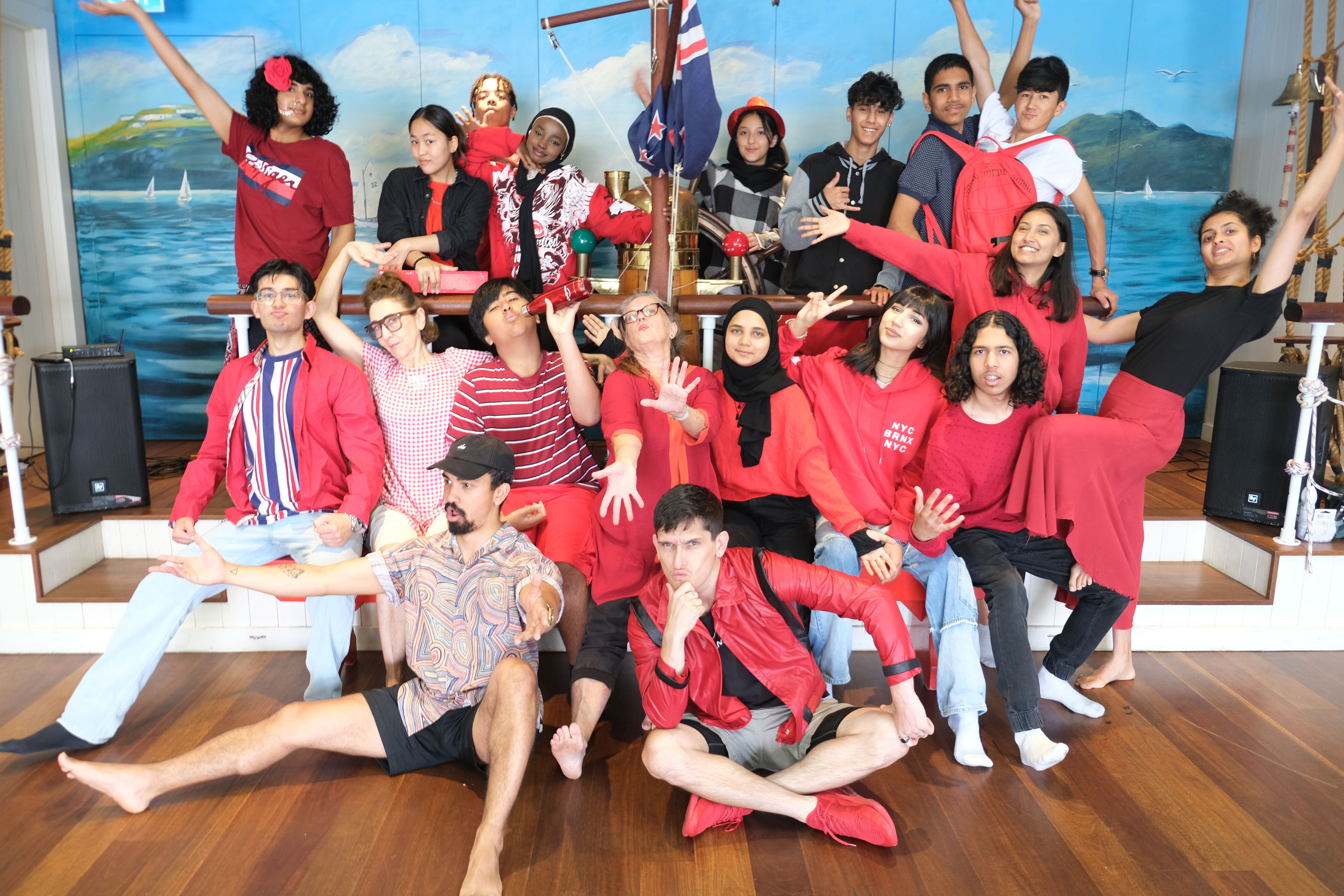
Mixit staff and students. Photo: Hanna Wiskari.
In 2023, during my MBA studies with the Global Leaders Institute, I had the opportunity to engage in fieldwork with Mixit, an arts community organization based in Tāmaki Makaurau Auckland, Aotearoa New Zealand. Mixit works with a culturally diverse group of youth, primarily from refugee and migrant backgrounds, using creativity to empower and support them in developing positive life skills through various artistic expressions.
I had known about Mixit for quite some time. Their work was not only fascinating from an artistic and pedagogical perspective but inspiring in its longevity; the organization has provided opportunities for young people from diverse backgrounds for the past 19 years. Still, I was curious to learn more. As a migrant myself, I had found there to be a lack of projects in Aotearoa New Zealand that use creativity and artmaking in intercultural, collaborative settings—despite the nation’s rich multicultural population. In particular, it is rare to find projects that have done this work over such a long period of time.
Mixit hosts free weekly Saturday sessions led by experienced facilitators and guest artists. Transport is always provided, which significantly lowers the barriers for participation.
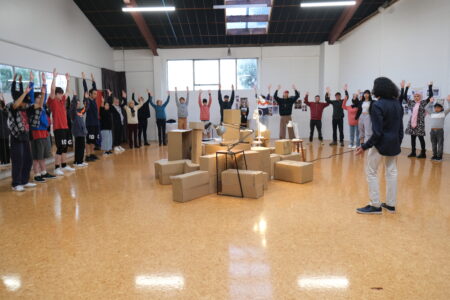
Each Mixit session starts with warm-up games, followed by introduction in a circle before moving on to the creative work. To finish off, there is always a shared meal. The organization also offers annual summer projects, performance opportunities, youth leader programs, alumni programs, and outreach projects across Aotearoa New Zealand. The core goal of these activities is to create a non-judgmental and inclusive environment that fosters confidence and deepens connections to self and others through creativity.
Because Mixit’s mission is not outcome-driven, they have made the conscious choice to not just work with one artistic discipline. Each term has a different theme, such as dance, drama, songwriting, and more. As the name of the organization indicates, it is important to mix it up! The main focus in any of their activities is socialization and belonging. In the words of Wendy Preston, Mixit’s Creative Producer and Director: “You don’t have to be good at it; you don’t have to have previous experience; but you are expected to participate. The process is the most important thing.”
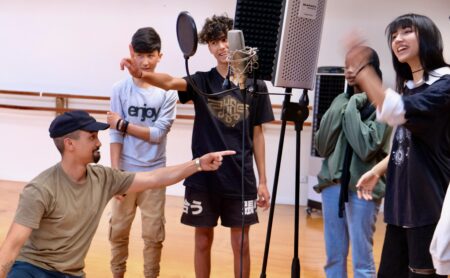
Key to Mixit’s success was its initial research phase, which began in 2005 thanks to funding from philanthropist Charmaine Barnett of The Fledgling Trust. Charmaine wanted to do something to support newly arrived youth in Auckland, which required proper research on what their needs were and how they might best be addressed. She approached Wendy Preston, who spent eight months meeting hundreds of people from a wide range of communities and backgrounds. She also traveled to Europe to learn from projects with similar intentions. Wendy’s previous experience working in creative projects with Māori and Pacific communities helped her articulate how a creative arts project might work in Aotearoa New Zealand. After she was able to map out her plan to Charmaine, the Trust committed to two years of funding, allowing Mixit to grow sustainably.
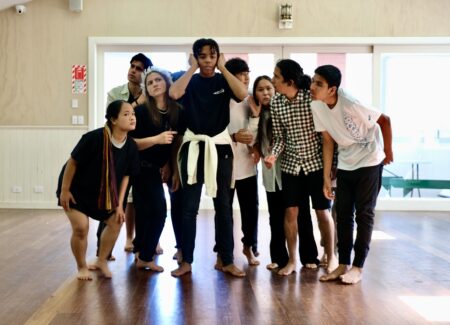
In Aotearoa New Zealand, the concept of kaupapa is highly valued and integrated in society—not only for the Indigenous Māori population but for everyone. Kaupapa can be translated to a principle, policy, or purpose, providing fundamental cornerstones and clear frameworks. With the Fledgling Trust’s support that first year, the Mixit team identified a number of key beliefs and core principles—the “Mixit Model”—that continues to guide them today:
- Socialization and belonging
- Non-judgemental inclusion
- Attendance is not compulsory
- Previous experience or artistic talent is not required
- Collective engagement
- Communication
- It’s the journey, not the destination
- Contemporary and interdisciplinary arts are the active base
- Foregrounding participants’ voices and ownership of personal narratives
- Youth leading youth
- Non-hierarchical structure
- It is not arts therapy
As Wendy Preston said, “If you have food, a ball, some games, music, dance, and code of conduct, then you have a fantastic recipe for connection and success.”
Not every organization is given an on-ramp, but those that are tend to make the most of it. Through my experience with Mixit, I have witnessed firsthand the importance of preparation and self-interrogation. “Whom do we serve? What are our principles?” When we ask these questions, we identify our core values and align them with our organizational practices. By committing to their kaupapa, Mixit continues to be a connectivity and creativity hub for young people across Aotearoa New Zealand’s creative and educational landscape.


